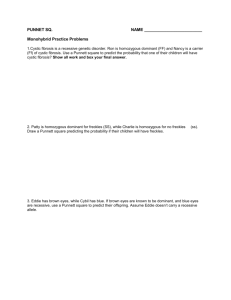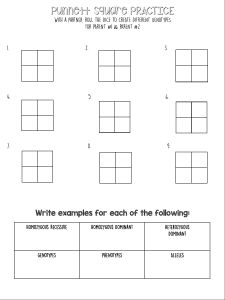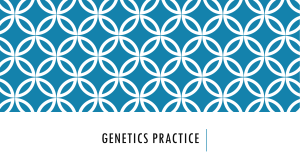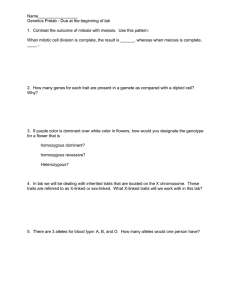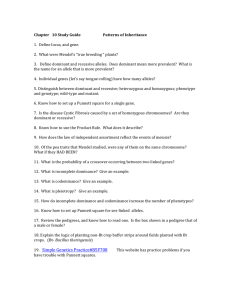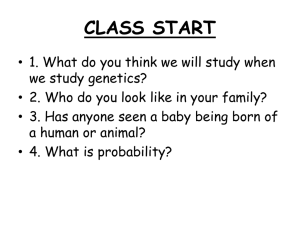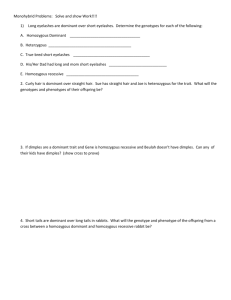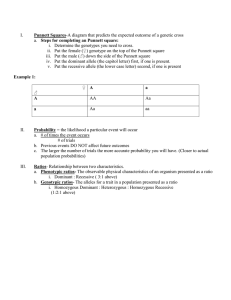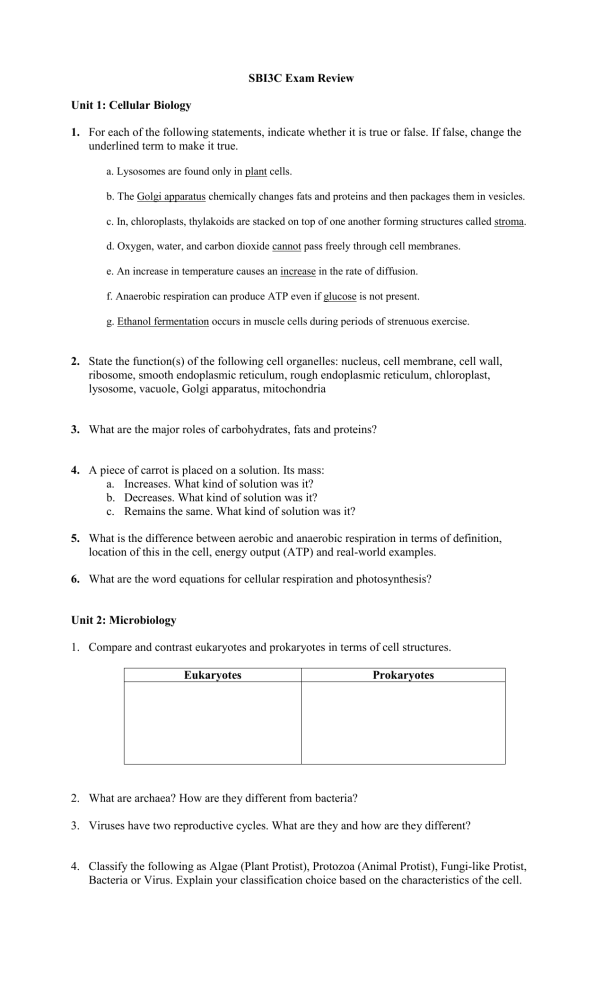
SBI3C Exam Review Unit 1: Cellular Biology 1. For each of the following statements, indicate whether it is true or false. If false, change the underlined term to make it true. a. Lysosomes are found only in plant cells. b. The Golgi apparatus chemically changes fats and proteins and then packages them in vesicles. c. In, chloroplasts, thylakoids are stacked on top of one another forming structures called stroma. d. Oxygen, water, and carbon dioxide cannot pass freely through cell membranes. e. An increase in temperature causes an increase in the rate of diffusion. f. Anaerobic respiration can produce ATP even if glucose is not present. g. Ethanol fermentation occurs in muscle cells during periods of strenuous exercise. 2. State the function(s) of the following cell organelles: nucleus, cell membrane, cell wall, ribosome, smooth endoplasmic reticulum, rough endoplasmic reticulum, chloroplast, lysosome, vacuole, Golgi apparatus, mitochondria 3. What are the major roles of carbohydrates, fats and proteins? 4. A piece of carrot is placed on a solution. Its mass: a. Increases. What kind of solution was it? b. Decreases. What kind of solution was it? c. Remains the same. What kind of solution was it? 5. What is the difference between aerobic and anaerobic respiration in terms of definition, location of this in the cell, energy output (ATP) and real-world examples. 6. What are the word equations for cellular respiration and photosynthesis? Unit 2: Microbiology 1. Compare and contrast eukaryotes and prokaryotes in terms of cell structures. Eukaryotes Prokaryotes 2. What are archaea? How are they different from bacteria? 3. Viruses have two reproductive cycles. What are they and how are they different? 4. Classify the following as Algae (Plant Protist), Protozoa (Animal Protist), Fungi-like Protist, Bacteria or Virus. Explain your classification choice based on the characteristics of the cell. Unit 3: Genetics 1. What are the roles of mitosis and meiosis? 2. Identify the following stages of mitosis and explain how you know it is that particular stage. 3. Identify the following stages of meiosis if it starts off with 4 pairs of chromosomes and explain how you know it is that particular stage. Make sure to indicate if it is in the first stage (Meiosis I) or the second stage (Meiosis II). 4. Freckles are a dominant trait. Patty is homozygous dominant for freckles, while Charlie is homozygous for no freckles. Draw a Punnett square predicting the probability (%) if their children will have freckles. Cystic fibrosis is a recessive genetic disorder. Ron is homozygous dominant and Nancy is a carrier (Ff) of cystic fibrosis. Use a Punnett square to predict the probability (in %) that one of their children will have cystic fibrosis? Show all work and box your final answer. 5. Woody Guthrie was heterozygous for Huntington’s disease (Hh). His wife was homozygous recessive and perfectly normal. Huntington’s disease is caused by a latent dominant gene, meaning that it is not phenotypically (physically) expressed until later in life. Dominant disease genes are expressed in homozygous dominant and heterozygous people (HH or Hh). Draw a Punnett square for the cross between Woody and his wife. 6. Larry and Lola Little have achondroplasia, a form of dwarfism. Both are heterozygotes. Their son, Big Bob Little, is 7’1”. Use a Punnett square to show how Big Bob got his genotype. . Unit 4: Anatomy of Mammals 1. Fill in the chart below, stating a function for each organ in the digestive system, including accessory organs: Organ Esophagus Function Stomach Liver Pancreas Small Intestine Salivary Glands Gall bladder Large Intestine 2. How does the pulmonary circuit and systemic circuit work? 3. What enzymes are involved in the digestion of: a) carbohydrates, b) fats, and c) proteins 4. What is the role of the diaphragm in the respiratory system? How does it work during inhalation and exhalation? 5. How does the respiratory system work in terms of inspiration and expiration? Name all the organs involved. 6. Compare and contrast between the following pair of terms: Systole and diastole: Arteries and Veins Atria and Ventricles Red and White Blood Cells 7. How does gas exchange occur between the alveoli and capillaries? 8. The table below shows what happens when we inhale. Gas Inhaled Oxygen (O2) 20.71% Carbon dioxide (CO2) 0.04% Water (H2O) 1.25% Exhaled 14.6% 4.0% 5.9% Which gas shows the greatest difference in percent (%) between inhaled and exhaled air? Unit 5: Plants in their Natural Environment 1. There are four groups of plants. Each plant can be EITHER vascular or non-vascular and EITHER seed or non-seed. Check off the appropriate columns below: Vascular Non-Vascular Seed Non-Seed Moss Fern Gymnosperm Angiosperm 2. Compare and contrast monocots and dicots using varying characteristics (eg. Leaf pattern, arrangement of vascular bundles, number of cotyledons, etc) - - 3. Match the parts of a plant to their function by drawing lines between the columns. 1. xylem a) Transports sugar and other food b) Provides first seed leaves to become a plantlet 3. stem c) Protective wax layer 4. stomata 5. cuticle e) Allows for transport of nutrients and water through veins 6. root f) Transports water and dissolved nutrients 7. phloem g) Anchors plant to ground 8. cotyledon h) Allows for exchange of gases and water molecules 4. Give TWO functions for each part of the plant: Roots Stems Leaves 5. Answer the following questions about photosynthesis: a. Why is it so important to us? b. Where does it occur? c. What is the word equation for this process?
